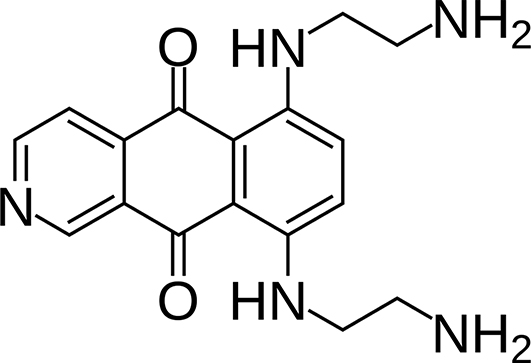EPJ E Highlight - Advanced cancer drug shrinks and intercalates DNA
- Details
- Published on 23 October 2019

Experiments and statistical models reveal that the recently developed cancer drug Pixantrone forces itself inside the double helix structure of DNA molecules, then shrinks their backbones.
Because of the harmful side-effects of chemotherapy, and the increasing resistance to drugs found in many cancer cells, it is critical for researchers to continually search for new ways to update current cancer treatments. Recently, a drug named Pixantrone (PIX) was developed, which is far less damaging to the heart than previous, less advanced compounds. PIX is now used to treat cancers including non-Hodgkin’s lymphoma and leukaemia, but a detailed knowledge of the molecular processes it uses to destroy cancer cells has been lacking so far. In a new study published in EPJ E, Marcio Rocha and colleagues at the Federal University of Viçosa in Brazil uncovered the molecular mechanisms involved in PIX’s interactions with cancer DNA in precise detail. They found that the drug first forces itself between the strands of the DNA molecule’s double helix, prising them apart; then compacts the structures by partially neutralising their phosphate backbones.
The team’s discovery could soon lead to even more advanced cancer drugs, through comparisons with the mechanisms used by PIX to those of its predecessor, Mitoxantrone. By identifying which of these processes destroy cancer DNA most effectively, researchers could develop further drugs that are even better at eliminating the disease, while minimising side-effects. Rocha and colleagues revealed PIX’s characteristic prising and shrinking mechanisms by first studying how changes in the mechanical properties of combined DNA-PIX complexes relate to the concentration of the drug. They then used statistical models to determine the parameters of the binding forces between the two structures.
The researchers measured these properties by trapping PIX and DNA molecules with highly focused laser beams, allowing them to probe their binding forces within two different-strength solutions. As the need to update our current approaches to cancer treatments becomes increasingly apparent, the insights gathered by Rocha’s team could soon lead to important advances towards more sophisticated drugs.
C.H.M. Lima, J.M. Caquito jr, R.M. de Oliveira, M.S. Rocha (2019), Pixantrone anticancer drug as a DNA ligand: Depicting the mechanism of action at single molecule level, Eur. Phys. J. E 42:130. DOI 10.1140/epje/i2019-11895-6




